Silahis Antiques, Intramuros, Manila, Philippines
Trish On Tour
Stories
One of our studio designers, Trish, was the envy of many of us when she decided last year that she was going for it, she was going on tour stopping off in the Philippines and then on to Tokyo, Japan. While we lived vicariously through her Instagram as she went, we thought it only right that she provide a full lowdown. With a keen eye for all things design and architecture here are some of the highlights from her trip…
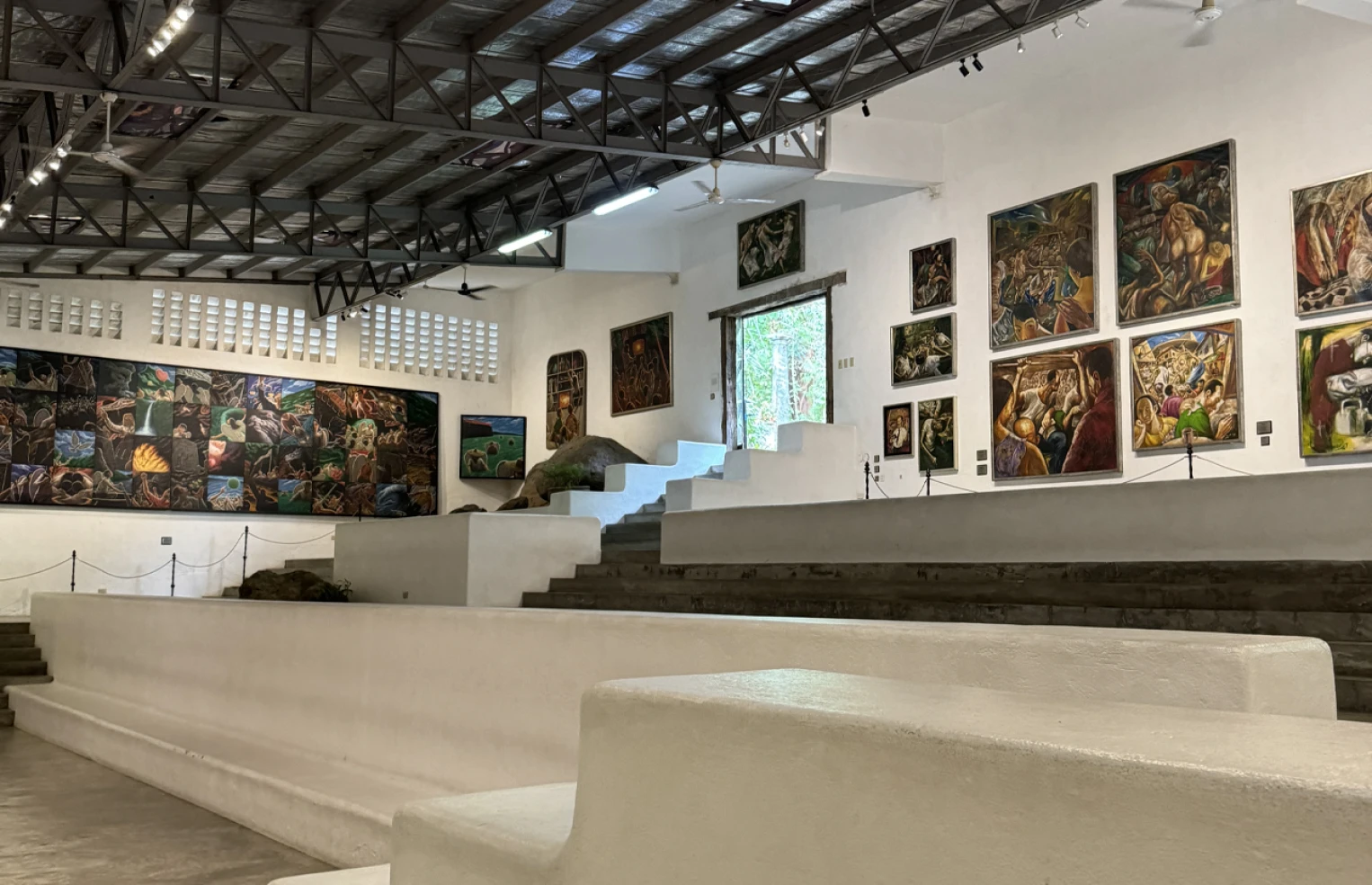
Pinto Art Museum, Antipolo, Philippines
Trish, it’s time to share with the group, where you went, what you did and favourite parts of your journey. Firstly, Manila as your first stop-off, we know it is going through huge development at the moment. Is it possible to see good examples of both traditional and modern Filipino architecture in Manila?
Trish
The modern buildings that stood out to me were the ones with Filipino design touches incorporated into it. The country's biggest design asset is intricate woodwork in interiors and structural details. New, innovative materials and designs are mixed with the vernacular, which makes them look quite unique. I came across a good example of traditional architecture in Intramuros, a historic walled city founded by the Spaniards during their reign, as well as the Pinto Art Museum in Antipolo. The buildings there were a mix of Spanish, American, Chinese, and Malay influences. Casa Manila, Silahis Antique Shop, or The Manila Bulletin Headquarters, are a prime example. There was some cool modern Filipino architecture in the area we stayed in, Makati City. One was a high-rise building with Art Deco references and a geometrically elevated walkway covered with beautiful murals about the Philippines.
Once you settled in and began your adventure, what stood out to you most about the city?
Trish
The vivid colours... The lively colours of buildings, street food, art, and colourful outfits people wore that matched the Filipino’s colourful personalities. The country is rich in history and has a vibrant culture that’s reflected in its surroundings.
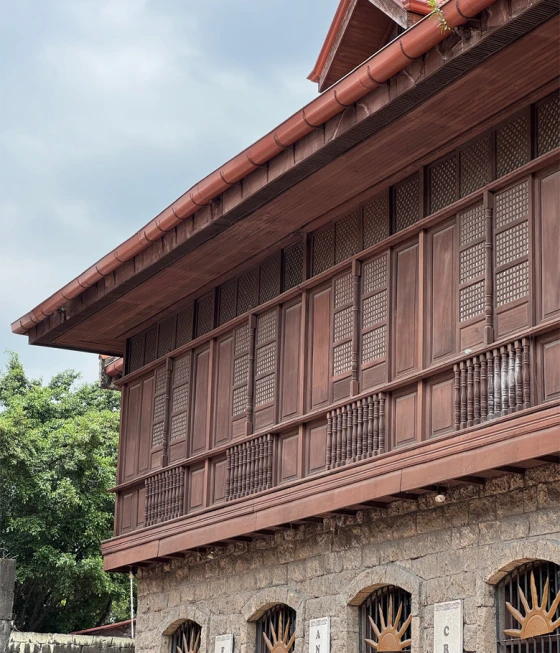
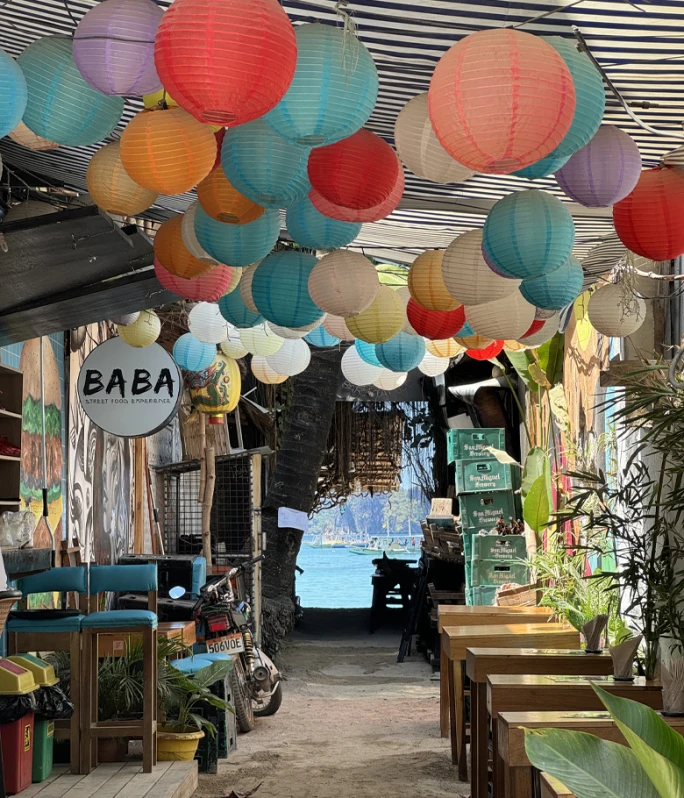
El Nido, Palawan, Philippines
What was your favourite retail space to visit?
Trish
I have several favourites from Tokyo. First would definitely be the iconic glass block building of the Hermes store in Ginza. I wasn’t there for the shopping experience but for the art exhibition in the gallery space, a few floors up from the retail area.
Seeing the bespoke 45x45cm glass blocks up close as a backdrop for the artwork was magical.
Second is Tsutaya Books, located on the top floor of the shopping mall, Ginza Six. They also had a dedicated exhibition space for art, but what I love the most about the design of the space was the impressive shelving display and structure. Also, as a book junkie, I had a field day browsing through the array of books that I have not seen published outside of Japan. Third is Shop Parco in Shibuya. For me, it was a source of nostalgia. It houses the first Nintendo Store, Jump Shop and Pokemon Centre. Still, the 10-storey mall had everything: fashion, lifestyle, and a food court in the basement with queues of people wanting to try amazing Japanese cuisine. Each concession stand was cleverly designed to suit its brand aesthetic. I went home with a lot of design takeaways and ideas!
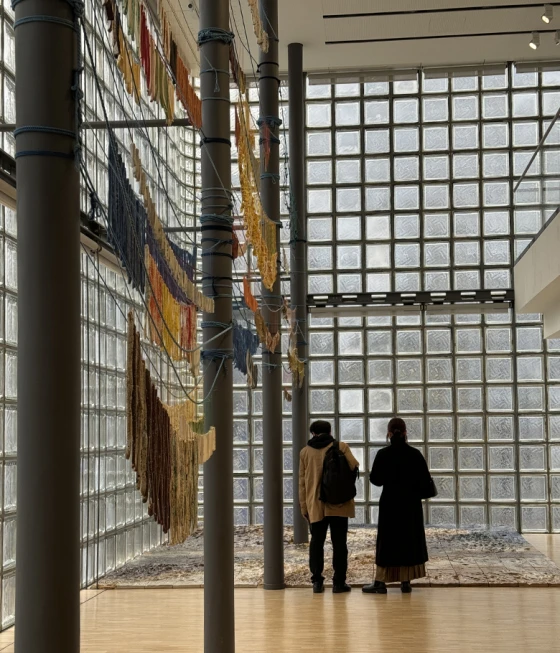
Hermes Art Gallery Floor, Ginza, Tokyo
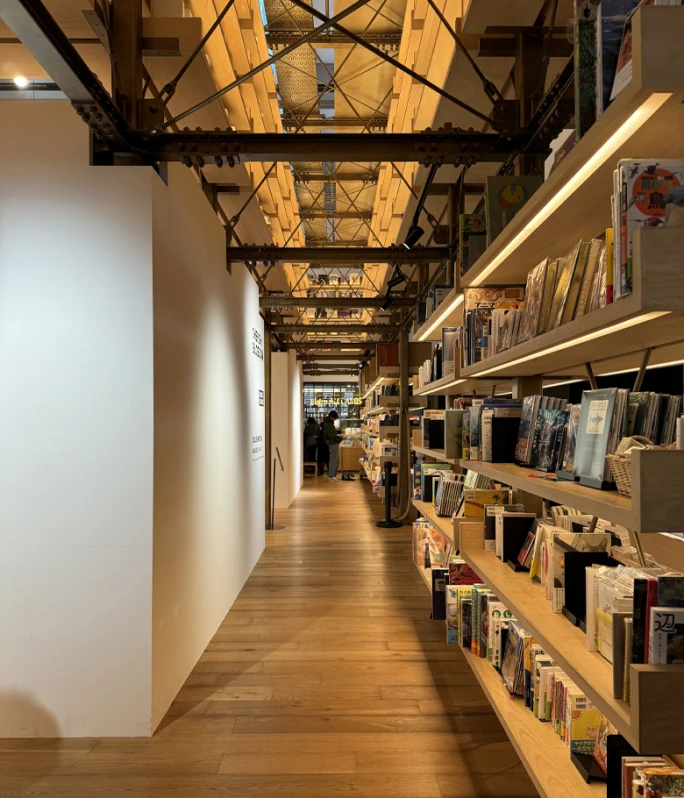
Tsutaya Books, Ginza Six, Tokyo
What was your favorite restaurant space you visited?
Trish
It’ll have to bebe Antonio’s Cabana, Tagaytay in the Philippines. The restaurant is a colonial-era mansion surrounded by dreamy gardens, pineapple farms and a lush, tropical landscape. The whole experience showcased the best aspects of the Philippines through the choice of antique-crafted furniture, interior design, and farm-to-table philosophy. The place had an ancestral feel to it but still looked modern. It was airy but cosy. The use of traditional home furniture typically seen in Filipino houses made the place homely and, I’d say, added to the deliciousness of the food served. The service was excellent and embodied Filipino hospitality. Getting there was a drive-through the jungle but it was well worth it.
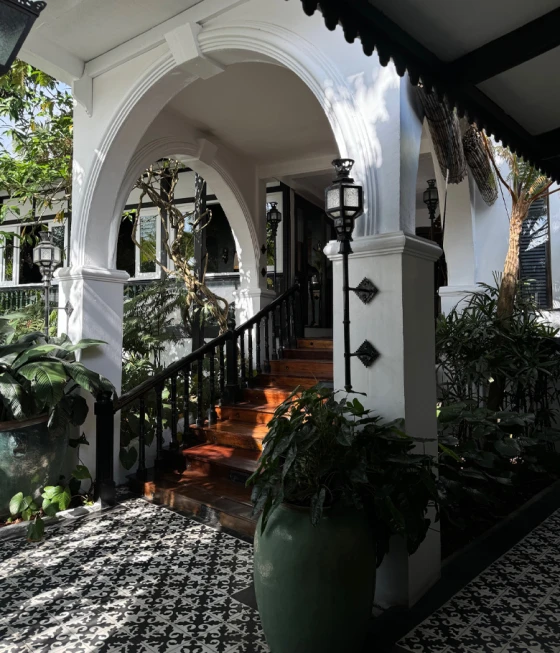
Courtyard entrance at Antonio's Cabana, Tagaytay, Philippines
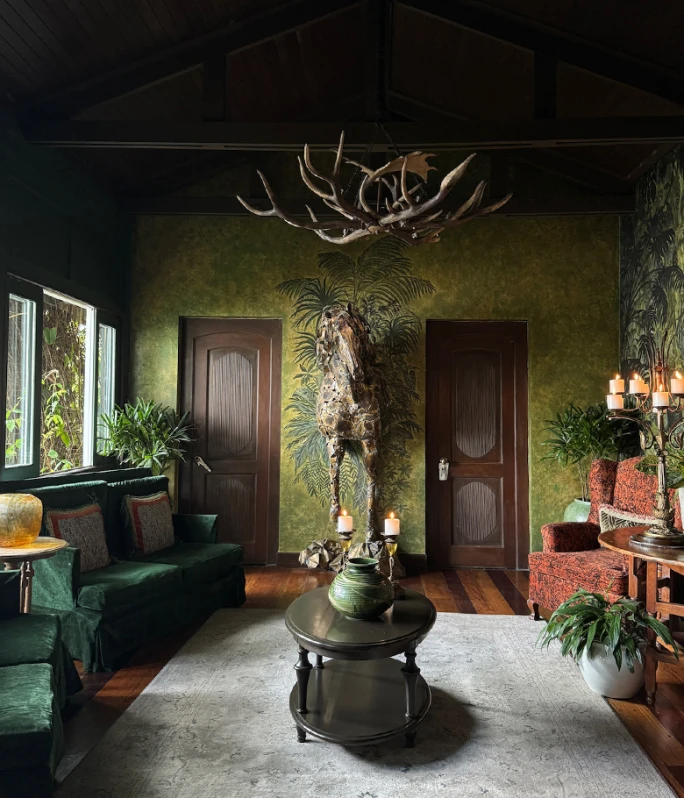
Entrance lobby at Antonio's Cabana, Tagaytay, Philippines
Are there many architectural landmark buildings within Tokyo? Do you have a couple of favourites?
Trish
To say that Tokyo has many architectural landmarks is an understatement. Tokyo is made up of traditional and modern areas with amazing feats of architecture at every corner.
It pays to look up in this city because you’re constantly bombarded with cool and sometimes unusual details that you could easily miss as you explore.
Heatherwick Studio’s Azabudai Hills was the stand-out architectural marvel of my trip. I’ve always been a fan of their work, and photographs that I’ve seen of the landmark looked unreal, so I was excited to see it in real life. Azabudai Hills is dubbed an ‘Urban Village’ with shopping malls, residential and office blocks and even a new school all in one impressive complex. The natural forms and vegetation are a great addition to a city lacking greenery. It’s also worth mentioning that Ginza has lots of impressive architectural gems (pun intended). This upscale shopping destination is nothing short of luxurious, and the design and construction of the buildings are a true reflection of this.
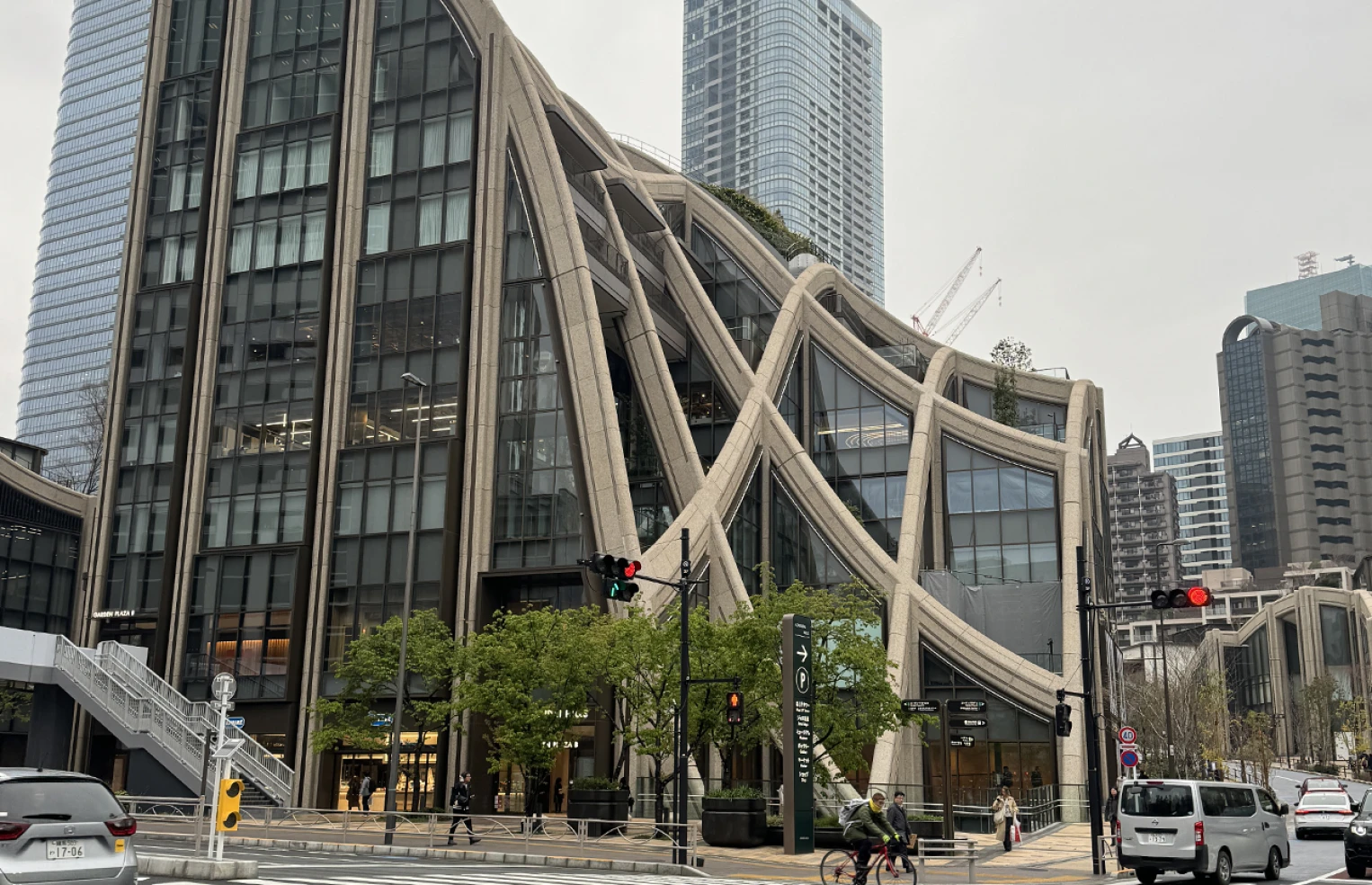
Azabudai Hills, Tokyo, Japan
Did you get to a museum space, and which stood out to you the most from an experience and design perspective?
Trish
In Tokyo, we visited The National Art Centre in Roppongi, designed by Kisho Kurokawa & Associates Nihon Sekkei. The curtain-wall façade is made up of beautiful undulations. Inside are two massive, inverted cone-shaped structures finished in concrete that contrast with the fluidity and lightness of the glazed façade. The whole building is virtually striking inside and out. The three exhibition floors exhibited a mix of Japanese and Western art that housed a digestible number of paintings and sculptures. Cafes and restaurant spaces are strategically located where you can admire the vacuous size of the inverted-cone structures or the garden outdoor landscape.
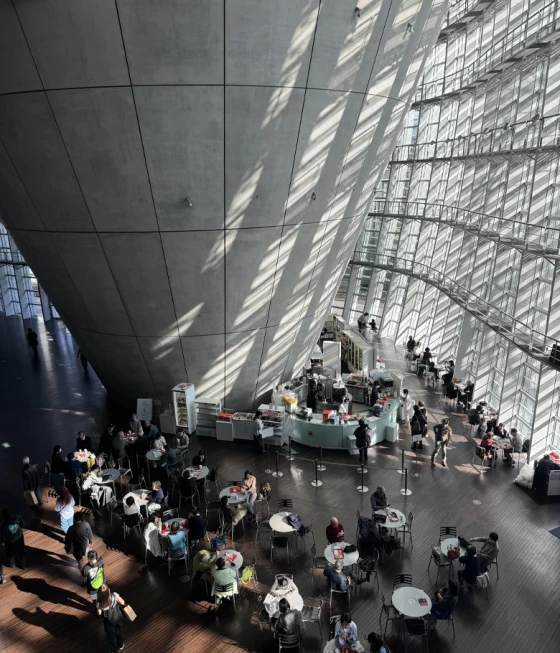
The National Art Centre, Tokyo, Japan
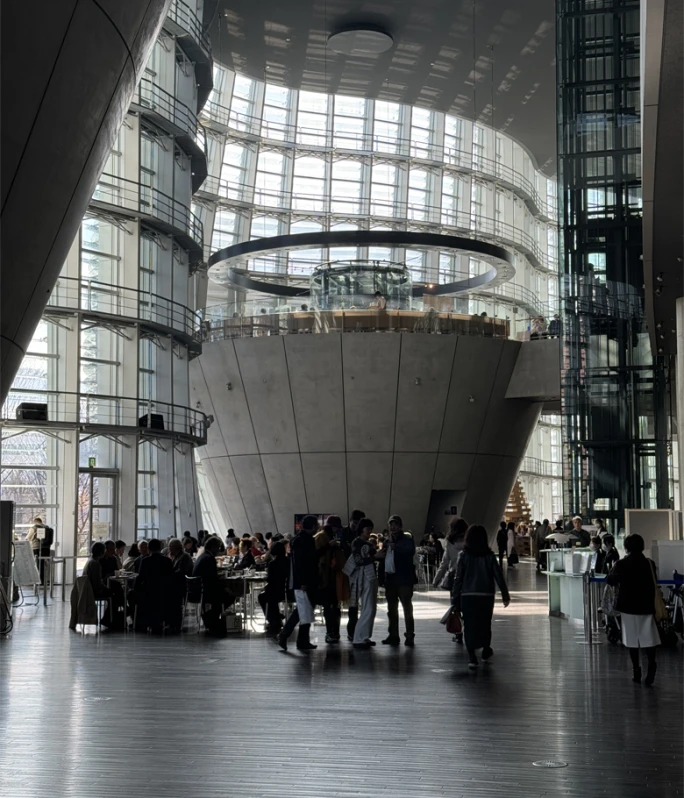
The National Art Centre, Tokyo, Japan
Does Tokyo feel like a city that has found a balance combining old and new architecture and design?
Trish
Yes, I feel that it does. I think the giant brightly coloured billboards and signage play a huge part in this. It was the one thing that both old and new buildings had. Japan is an amazing place for graphic design; when its written alphabet looks like artwork, it’s a great element to design with. Old buildings are casually wedged in amongst new buildings, but it seems like they apply equal importance to both because it looks like they preserve an old buildings’ character and are as charming as the new ones. Whenever there are new urban complexes, such as Azabudai Hills in Minato City, there’s enough breathing space between them and the existing building structures, so maybe the availability of large open spaces is a contributing factor to achieving balance.
What was your favourite Tokyo district for exploring and why?
Trish
Ueno. It is a district with everything I expected and wanted to see and learn about Tokyo in such a short space of time. You have Ueno Park, which is best known for viewing cherry blossoms in the spring. In the park, you also have the Ueno Zoo, where you can see the popular Pandas, several museums, and shrines. Outside the park, you will find shopping streets, markets, and side streets filled with typical Japanese restaurants. A few steps down is the neighbourhood Akihabara, alternatively named ‘Electrical Town’. Its streets are lined with electrical shops selling new and vintage electronics and shops specialising in manga and anime merch. This is the best place for photography enthusiasts looking to get themselves a camera as a souvenir or tech aficionados discovering new gadgets. The Skyliner train service goes to Ueno directly from Narita Airport. It’s a fantastic location for a convenient and fun area to stay in.
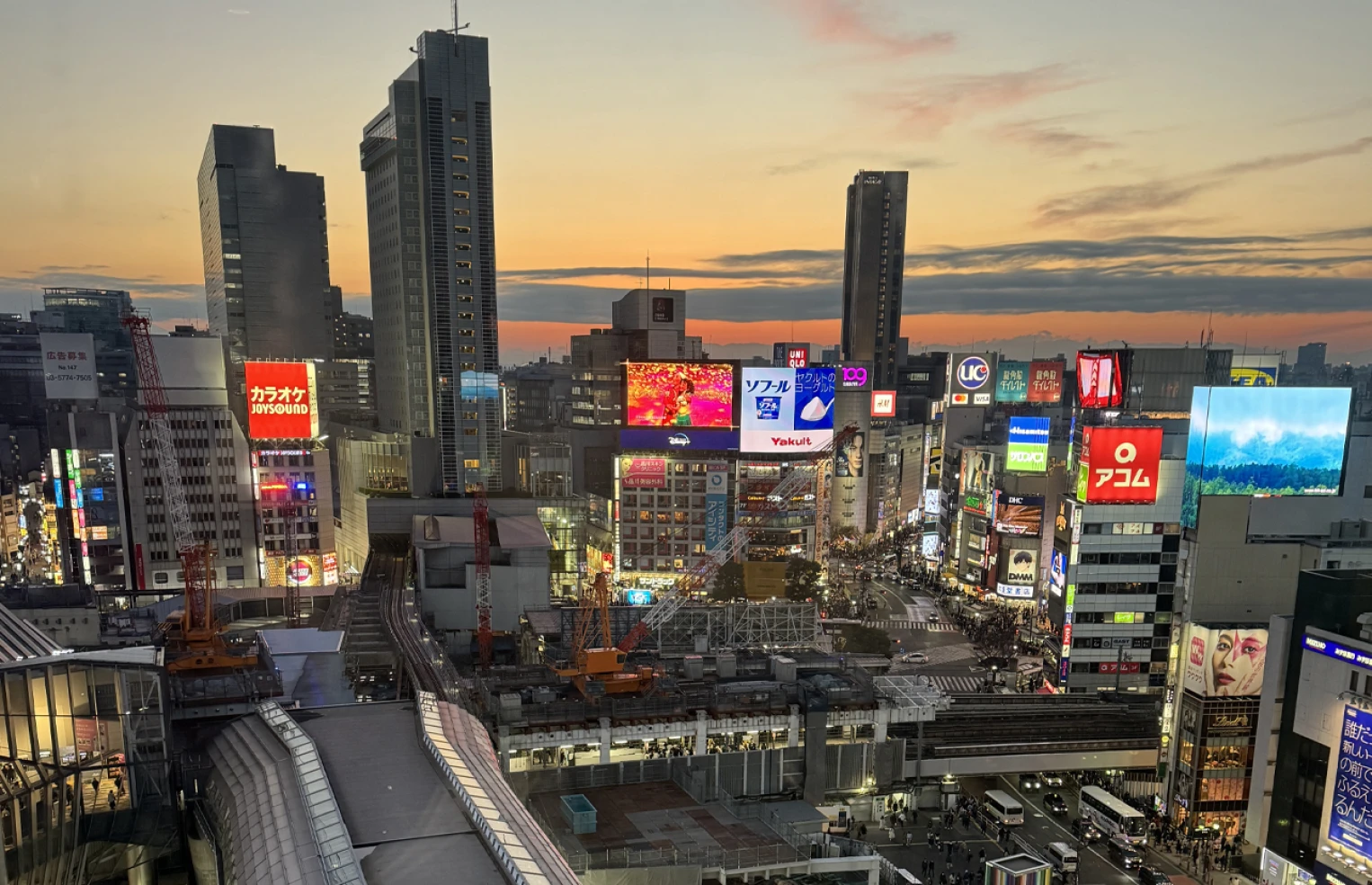
Tokyo overlooking Shibuya crossing at Sunset
For more images of the trip, you can find them on Trish's Instagram.